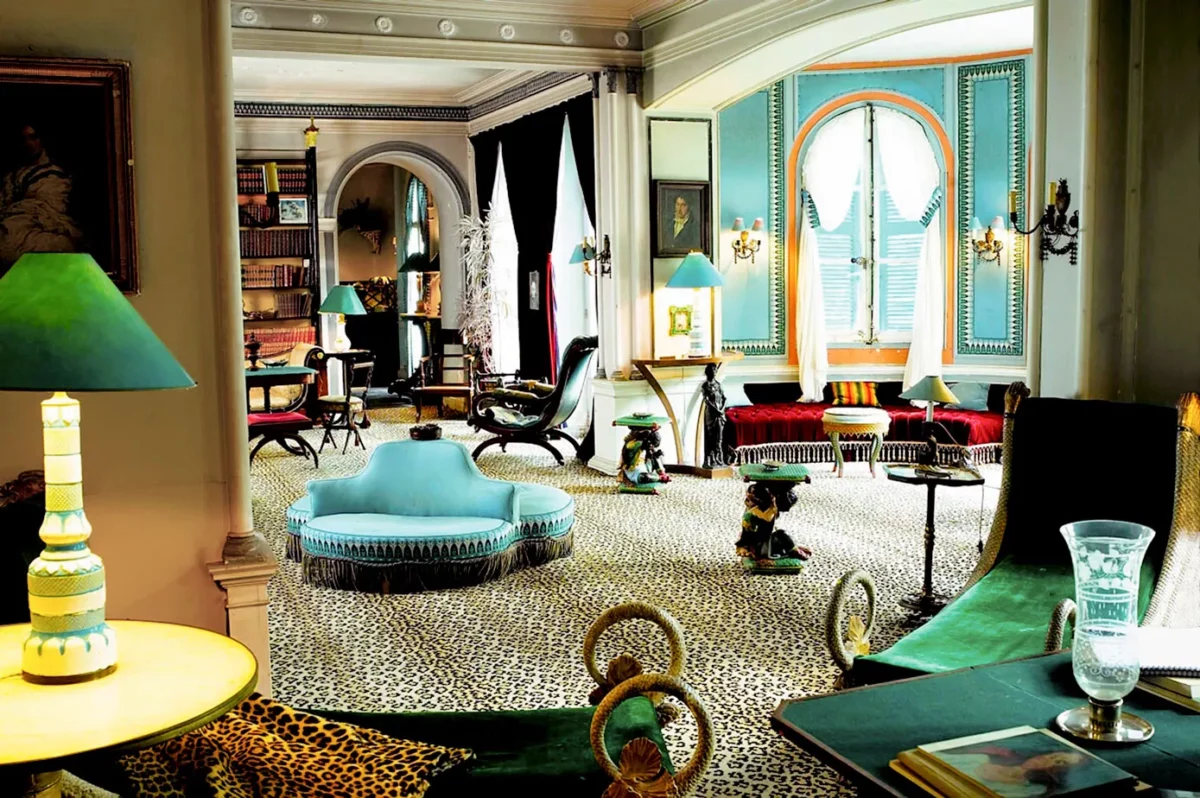Madeleine Castaing (1894-1992) remains one of the most emblematic figures of 20th-century French decoration. This legendary decorator revolutionized the French art of living by developing an eclectic style of absolute sophistication, becoming the essential reference of Parisian elegance. An undisputed master of mixing eras and styles, she wielded infallible taste that transcended conventions. Her non-conformist approach continues to durably influence contemporary luxury decoration, making her a perpetual source of inspiration for today’s decorators.
To delve deeper into this grande dame of decoration’s universe, Maison Castaing continues to perpetuate her creative heritage and exceptional craftsmanship today.
The Legacy of the Hôtel Particulier Rue Jacob
A Laboratory of Parisian Elegance
The private mansion on rue Jacob constitutes Madeleine Castaing’s architectural manifesto. In this mythical location in Paris’s 6th arrondissement, she experimented and refined her art of mixing, creating a refined eclecticism that would become her signature. Each room in this residence testifies to her extraordinary ability to make centuries dialogue: Louis XVI furniture coexists with Art Deco creations, while primitive art objects harmonize with neoclassical pieces.
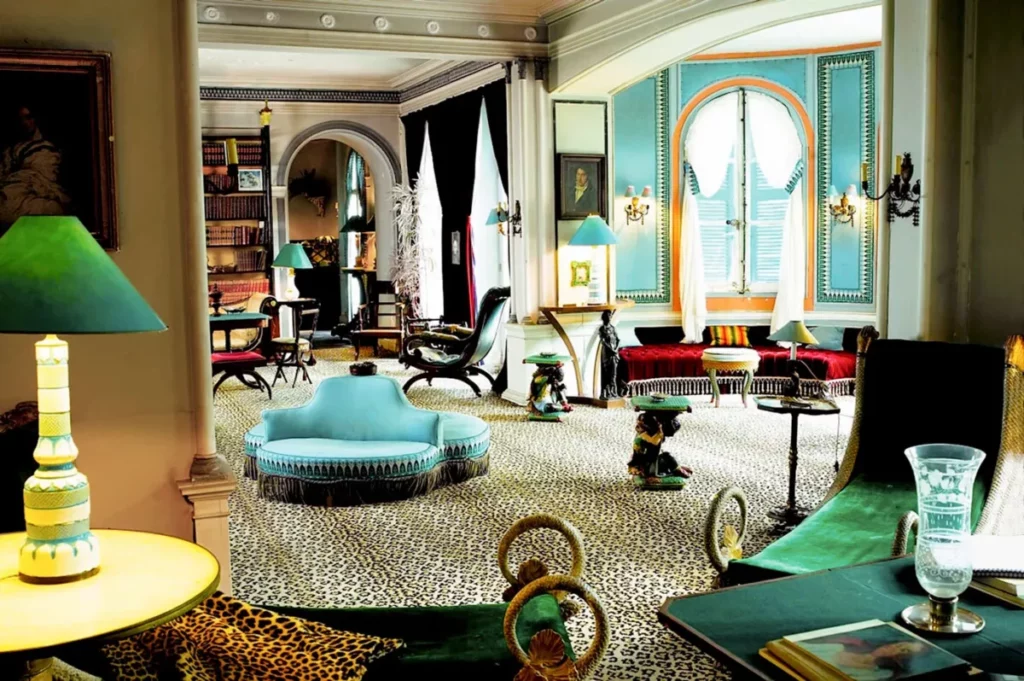
This residence quickly became the laboratory of what she herself called “the French art of living.” The salons of rue Jacob welcomed all of Parisian artistic and intellectual elite, transforming the space into a veritable literary salon where creators, collectors, and enlightened art lovers mingled
Neo-Empire Furniture: A Bold Reinterpretation
When History Meets Modernity
Madeleine Castaing revolutionized the approach to Empire furniture by creating her own neo-Empire language. Far from faithful reproduction, she boldly reinterpreted Napoleonic codes, adapting them to contemporary requirements while preserving their theatrical grandeur.
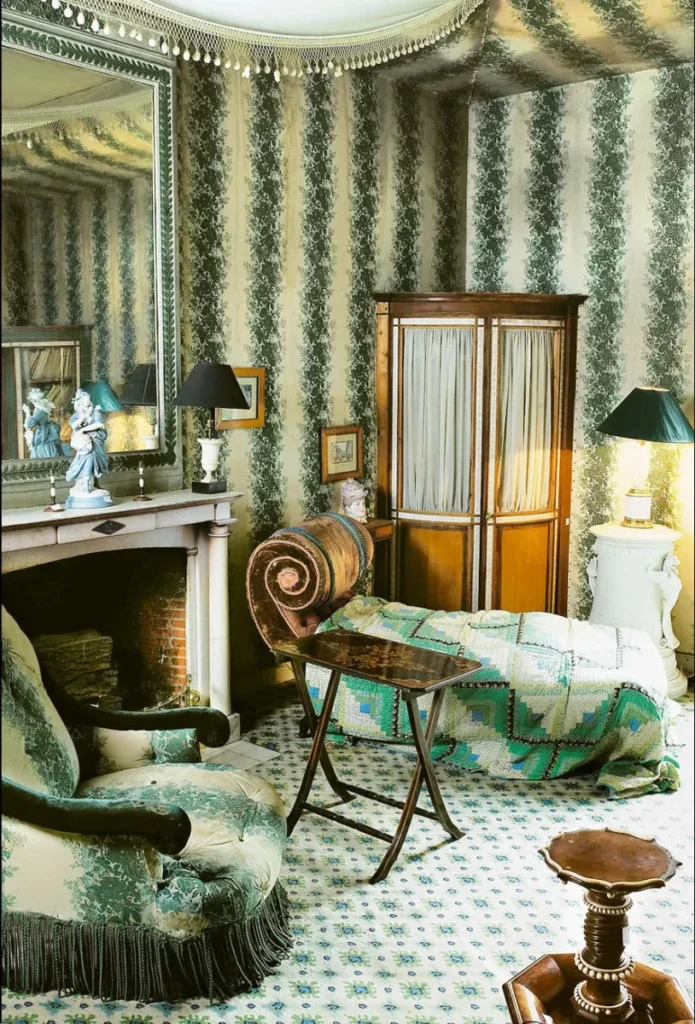
Her neo-Empire creations are characterized by masterful use of gilded bronzes, precious marbles, and exotic woods. She dared unexpected associations: an authentic Empire secretary dialogues with a bergère of her creation, covered in leopard-print fabric she particularly favored. This innovative approach to historical furniture profoundly influenced decorators of her generation and continues to inspire contemporary creators.
Castaing Wallpapers: The Art of Wall Decoration
A Timeless Decorative Signature
The wallpapers signed by Madeleine Castaing constitute one of her most lasting contributions to French decorative art. These wall creations, characterized by sophisticated motifs and bold colorings, testify to her taste for theatrical and refined atmospheres.
Her favorite motifs – wide stripes, leopard prints, stylized hunting scenes – quickly became classics of luxury decoration. The famous “Madeleine” motif with bicolor stripes still adorns the most beautiful Parisian interiors today. These wallpapers, produced with exceptional artisanal care, transform each room into a precious setting, creating unique atmospheres where sophistication and fantasy blend.
Refined Eclecticism: A Decorative Philosophy
The Art of Subtle Mixing
Madeleine Castaing’s decorative philosophy rests on a fundamental principle: “One must mix eras to create one’s own era.” This revolutionary approach to interior design broke the academic codes of her time, proposing a free and personal vision of decoration.
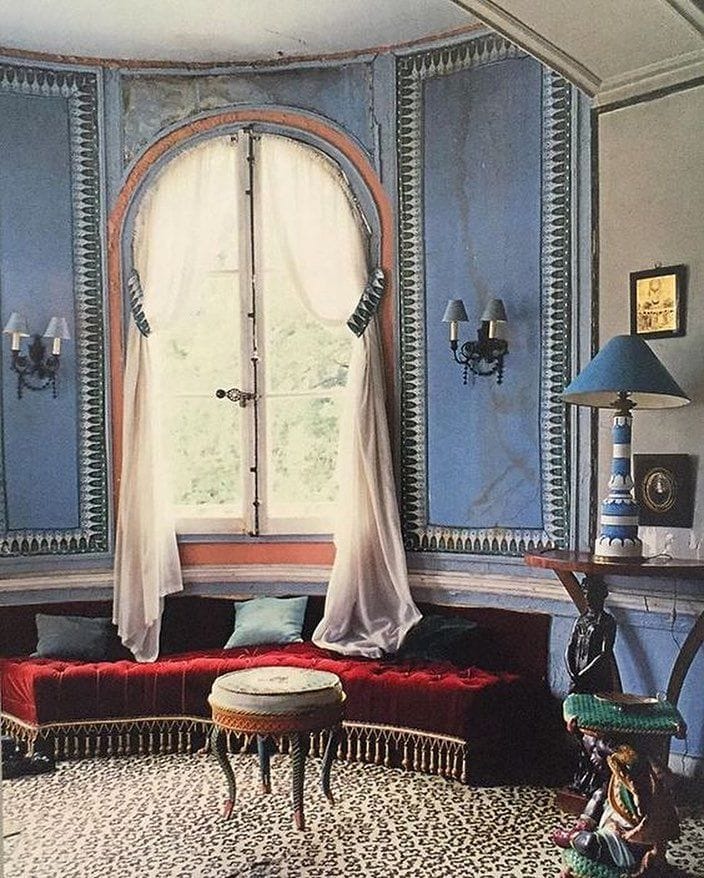
Her refined eclecticism manifests through her unique ability to associate the incompatible: a precious Louis XV commode neighbors with an African bronze, while an ancient Persian rug dialogues with contemporary patterned cushions. This aesthetic of apparent controlled chaos actually reveals perfect mastery of volumes, colors, and materials.
Collaborations and Influence
A Network of Excellence in Service of Art de Vivre
Madeleine Castaing collaborated with the greatest Parisian collectors of her era, creating exceptional interiors for them that became stylistic references. Her prestigious clientele – aristocrats, industrialists, artists – called upon her talent to create unique living environments, reflections of their refined personalities.
Maison Castaing, which she developed alongside her decorator activity, quickly became an essential reference for art de vivre enthusiasts. Her furniture creations, exceptional fabrics, and decorative objects diffused her aesthetic well beyond her private realizations, durably influencing French taste.
Through her protean work, Madeleine Castaing defined the codes of a modern French art of living, where sophistication allies with creative audacity. Her legacy continues to inspire contemporary decorators, perpetuating a certain idea of timeless Parisian elegance.
Learn more:
- Explore the universe of great French decorators at the Musée des Arts Décoratifs
- Discover other design icons who have marked the history of decoration
Madeleine Castaing (1894-1992) remains one of the most emblematic figures of 20th-century French decoration. This legendary decorator revolutionized the French art of living by developing an eclectic style of absolute sophistication, becoming the essential reference of Parisian elegance. An undisputed master of mixing eras and styles, she wielded infallible taste that transcended conventions. Her non-conformist approach continues to durably influence contemporary luxury decoration, making her a perpetual source of inspiration for today’s decorators.
To delve deeper into this grande dame of decoration’s universe, Maison Castaing continues to perpetuate her creative heritage and exceptional craftsmanship today.
The Legacy of the Hôtel Particulier Rue Jacob
A Laboratory of Parisian Elegance
The private mansion on rue Jacob constitutes Madeleine Castaing’s architectural manifesto. In this mythical location in Paris’s 6th arrondissement, she experimented and refined her art of mixing, creating a refined eclecticism that would become her signature. Each room in this residence testifies to her extraordinary ability to make centuries dialogue: Louis XVI furniture coexists with Art Deco creations, while primitive art objects harmonize with neoclassical pieces.
This residence quickly became the laboratory of what she herself called “the French art of living.” The salons of rue Jacob welcomed all of Parisian artistic and intellectual elite, transforming the space into a veritable literary salon where creators, collectors, and enlightened art lovers mingled.
Neo-Empire Furniture: A Bold Reinterpretation
When History Meets Modernity
Madeleine Castaing revolutionized the approach to Empire furniture by creating her own neo-Empire language. Far from faithful reproduction, she boldly reinterpreted Napoleonic codes, adapting them to contemporary requirements while preserving their theatrical grandeur.
Her neo-Empire creations are characterized by masterful use of gilded bronzes, precious marbles, and exotic woods. She dared unexpected associations: an authentic Empire secretary dialogues with a bergère of her creation, covered in leopard-print fabric she particularly favored. This innovative approach to historical furniture profoundly influenced decorators of her generation and continues to inspire contemporary creators.
Castaing Wallpapers: The Art of Wall Decoration
A Timeless Decorative Signature
The wallpapers signed by Madeleine Castaing constitute one of her most lasting contributions to French decorative art. These wall creations, characterized by sophisticated motifs and bold colorings, testify to her taste for theatrical and refined atmospheres.
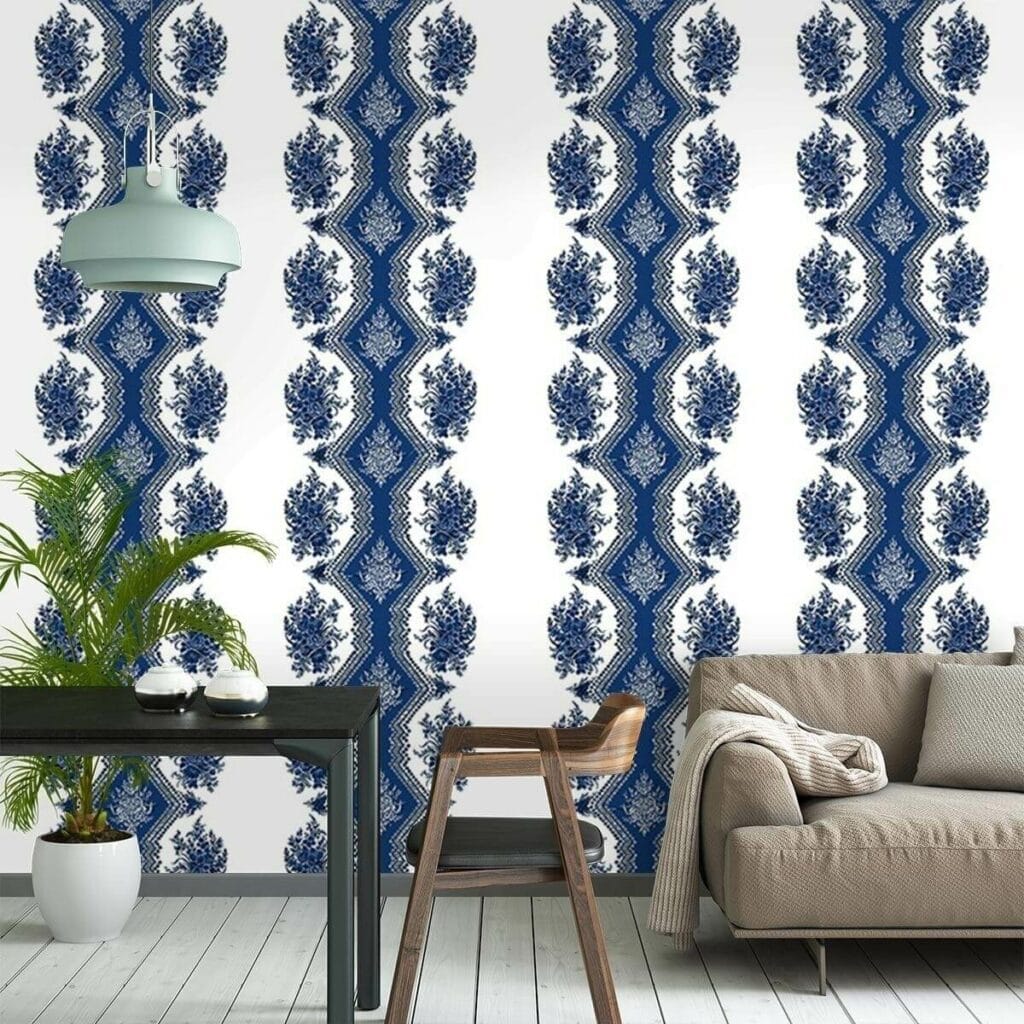
Her favorite motifs – wide stripes, leopard prints, stylized hunting scenes – quickly became classics of luxury decoration. The famous “Madeleine” motif with bicolor stripes still adorns the most beautiful Parisian interiors today. These wallpapers, produced with exceptional artisanal care, transform each room into a precious setting, creating unique atmospheres where sophistication and fantasy blend.
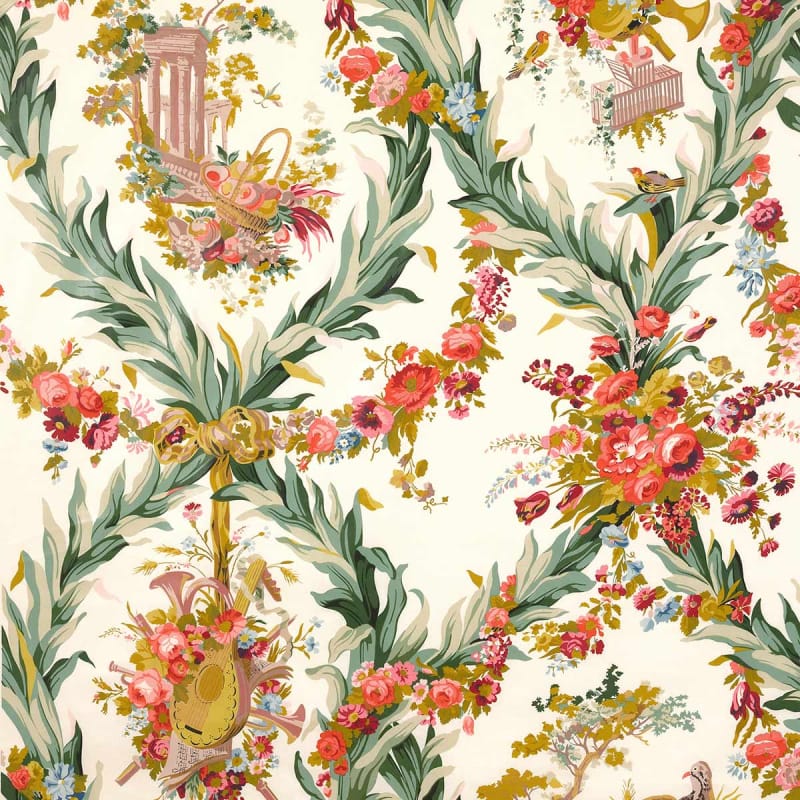
Refined Eclecticism: A Decorative Philosophy
The Art of Subtle Mixing
Madeleine Castaing’s decorative philosophy rests on a fundamental principle: “One must mix eras to create one’s own era.” This revolutionary approach to interior design broke the academic codes of her time, proposing a free and personal vision of decoration.
Her refined eclecticism manifests through her unique ability to associate the incompatible: a precious Louis XV commode neighbors with an African bronze, while an ancient Persian rug dialogues with contemporary patterned cushions. This aesthetic of apparent controlled chaos actually reveals perfect mastery of volumes, colors, and materials.
Collaborations and Influence
A Network of Excellence in Service of Art de Vivre
Madeleine Castaing collaborated with the greatest Parisian collectors of her era, creating exceptional interiors for them that became stylistic references. Her prestigious clientele – aristocrats, industrialists, artists – called upon her talent to create unique living environments, reflections of their refined personalities.
Maison Castaing, which she developed alongside her decorator activity, quickly became an essential reference for art de vivre enthusiasts. Her furniture creations, exceptional fabrics, and decorative objects diffused her aesthetic well beyond her private realizations, durably influencing French taste.
Through her protean work, Madeleine Castaing defined the codes of a modern French art of living, where sophistication allies with creative audacity. Her legacy continues to inspire contemporary decorators, perpetuating a certain idea of timeless Parisian elegance.
Learn more:
- Explore the universe of great French decorators at the Musée des Arts Décoratifs
- Discover other design icons who have marked the history of decoration
- Discover Castaing fabrics and wallpapers collection by Edmond Petit

Digital entrepreneur and craft artisan, I use my unconventional background to share my vision of luxury design and interior decoration — one enriched by craftsmanship, history, and contemporary creation. Since 2012, I have been working daily in my workshop on the shores of Lake Annecy, creating bespoke interiors for discerning decorators and private clients.

